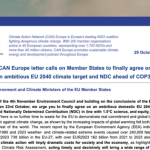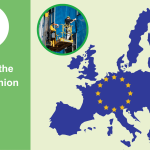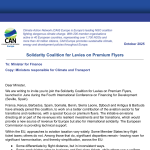OP-ED
Article by Chiara Martinelli, Director at CAN Europe, posted on Euronews
COP26 is just around the corner. Although it’s tempting to see it as just another climate summit, the reality is that this year, COP is exceptional.
With a global pandemic as a backdrop exposing vast inequalities and hitting the most vulnerable the hardest, a year’s hiatus from formal COP negotiations and a damning IPCC report, there are more reasons than ever to demand that countries step up their climate ambition in Glasgow.
Knowing this, and hearing some heads of state and government already making their statements of intent in the last months, we can certainly expect a COP26 full of big announcements.
Furthermore, this COP takes place after the five-year period post-signing of the Paris Agreement. This means COP26 will be a moment of accountability, when collective progress towards long-term climate goals will have to be assessed.
Consequently, governments will need to update their contributions to the scale needed. There should be no place to hide.
New EU commitments don’t go far enough
Over the last 12 months, the EU has had several flashy climate moments, such as the announcement of the ‘European Green Deal’ and ‘Fit for 55‘: the climate and energy legislative package seeking to make the green dream come true.
These were important steps, but now, how do these big commitments align to the enormous challenge that we have ahead?
Governments from all over the world should do what only governments can do – increase climate ambition.
The EU needs to overshoot its 55 per cent emission reduction target towards 65 per cent, to contribute its fair share to meet the Paris Agreement and limit global temperature rise to 1.5 degrees.
What comes after the big announcements?
Despite the unsexiness of the work behind the scenes, it is the key to operationalise promises. The attention usually goes where microphones, famous faces, triumphalist tweets and flashing cameras are. We need to remember this ahead of the COP26 public relations and marketing tsunami.
Let’s be unquenchable in holding European Governments accountable. Let’s have civil society, journalists, representatives and negotiators ask representatives about their updated Nationally Determined Contributions (NDCs), about phasing out fossil fuels, and about which steps are going to be taken in each of the nine years we have left before the 2030 threshold.
It is not enough just to think about what to do within our own borders. The EU, each member state, and the EU’s neighbours must lead the way and support developing countries that are suffering the worst impacts of climate change, despite having contributed little to causing it.
No country should be left behind
Ten climate summits ago at COP16, following the agreement at COP15 in Copenhagen, countries committed to a pledge of $100 billion per year from rich countries to developing ones until 2020.
Sadly, this objective is far from being met, hence the urgent need for parties to significantly increase their climate financing, as well as to kick off discussions on the post-2025 goals.
The path towards climate action should bring more justice so that those most vulnerable within our borders and beyond are not only not left behind, but become stronger in this transition.
We need to reach the 1.5-degree objective in a fair way, without leaving anyone behind. In parallel with announcements and high-level speeches, we need European countries and the EU to pursue bolder, faster climate ambitions and pave the way for others to follow.
We know from previous climate negotiations that last-minute homework (or lack thereof) doesn’t work, because it’s a collective assignment that needs to be coordinated, drafted and handed over.
No lame excuses. European countries and the EU need to lead by example and push for more ambition in their negotiations so that we can succeed as a class – a world class.
Contacts:
-
Chiara Martinelli, Director, martinelli@caneurope.org
-
Nina Tramullas, Communication Coordinator, tramullas@caneurope.org
-
Rachel Simon, Climate and Development Policy Coordinator, simon@caneurope.org
-
Sven Harmeling, International Climate Policy Coordinator, harmeling@caneurope.org
-
Tom Boyle, Head of Network Development, tom.boyle@caneurope.org



